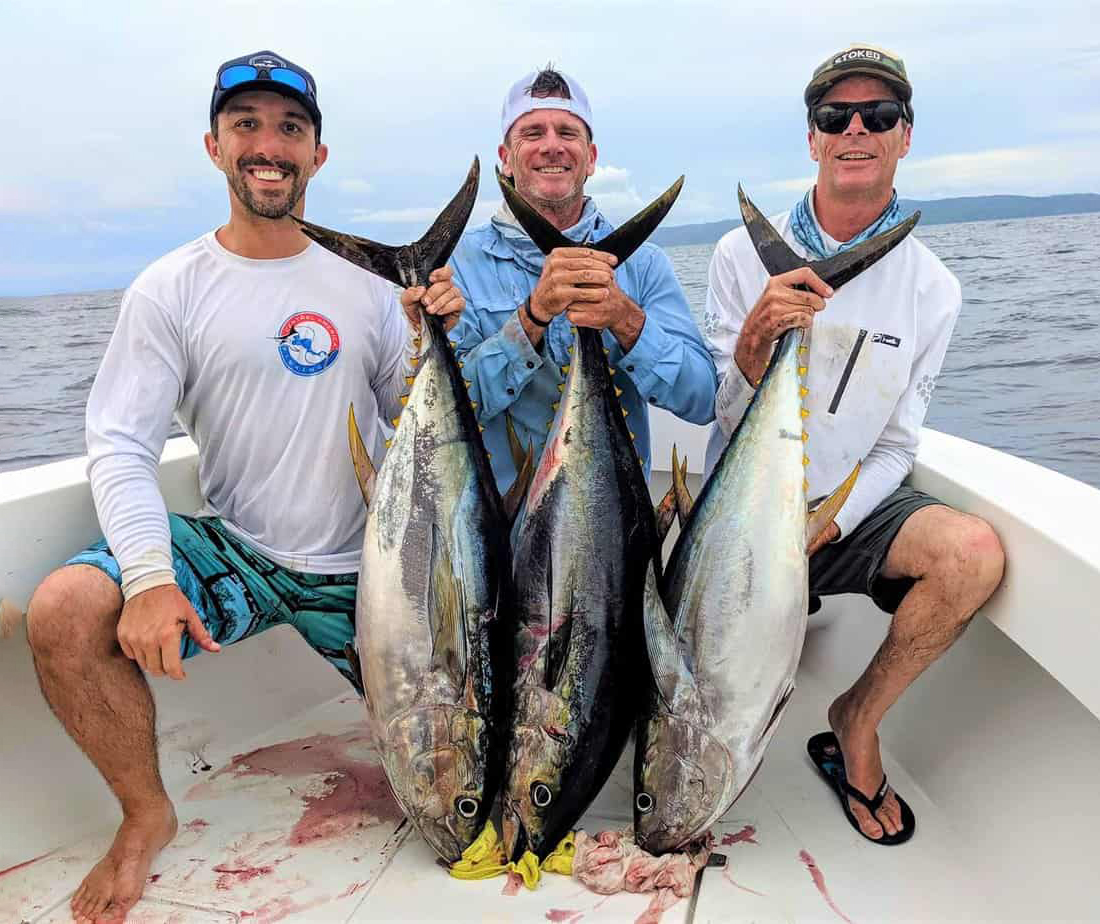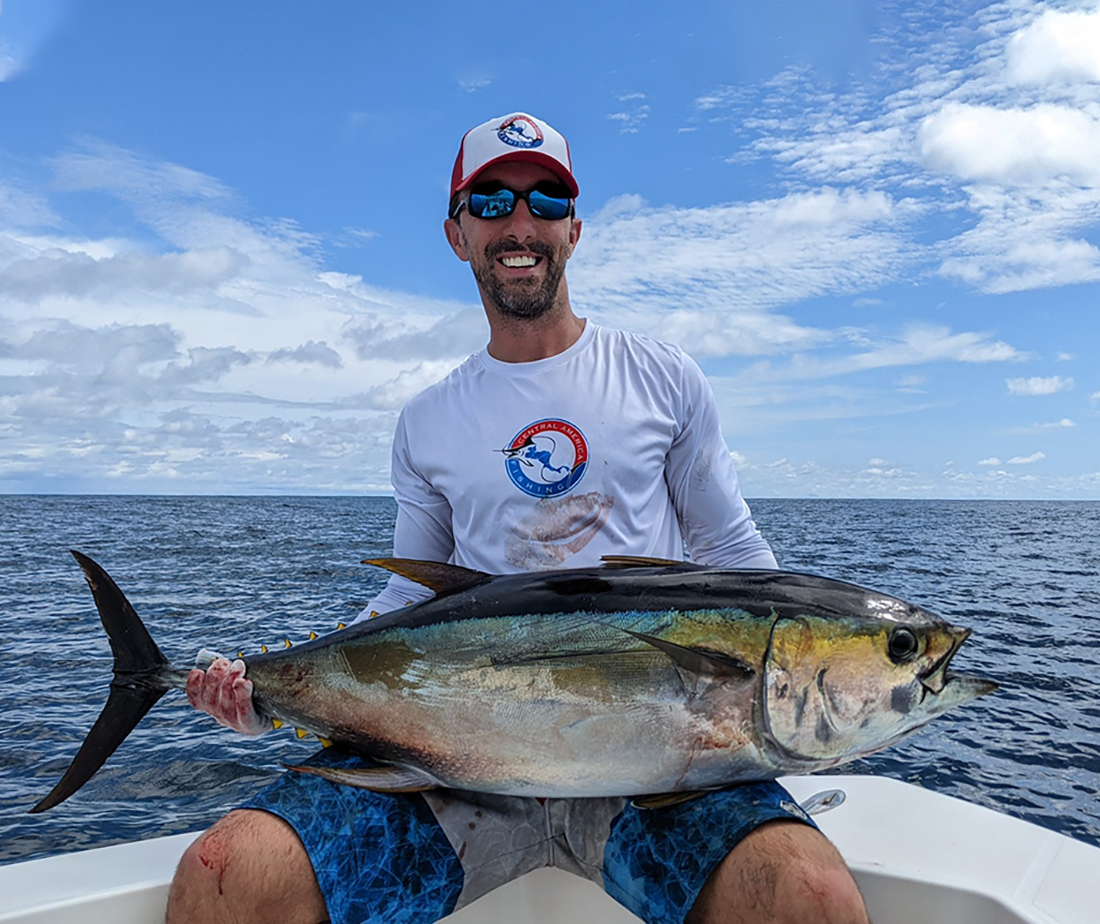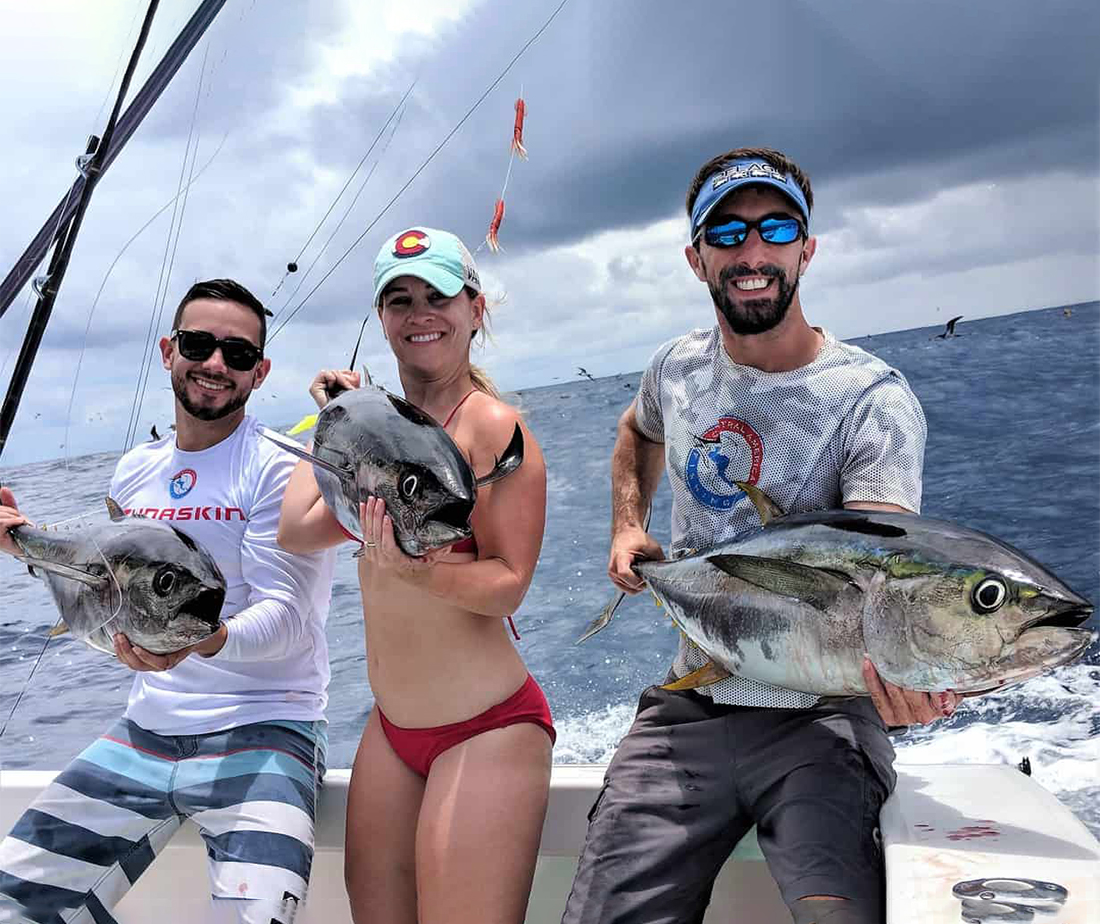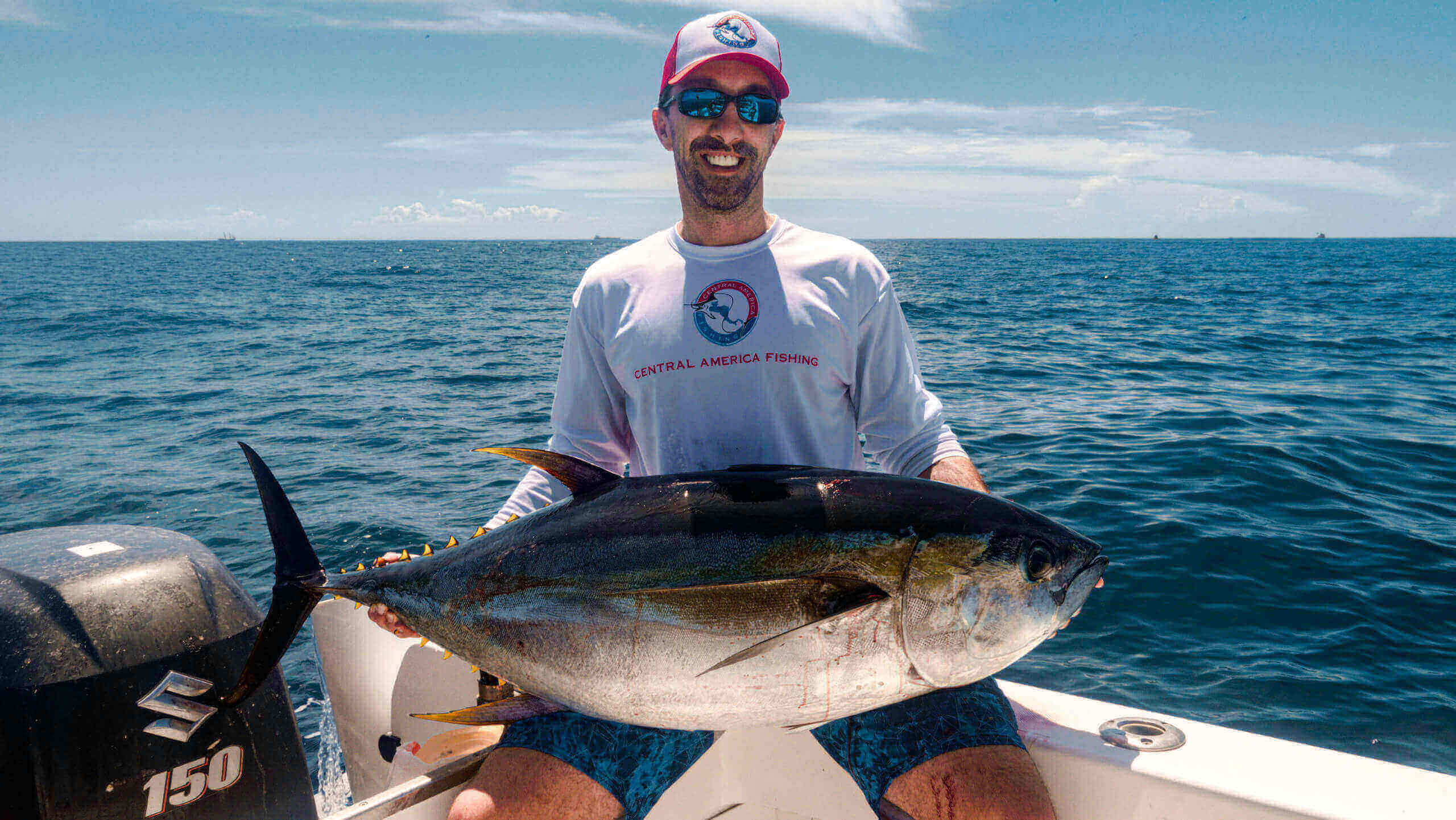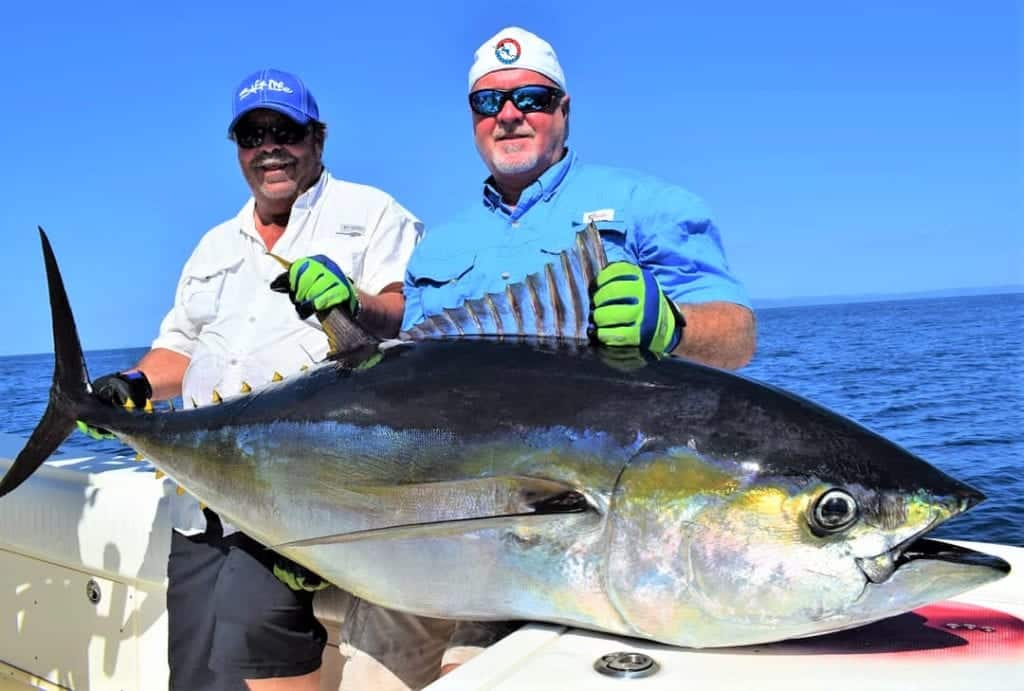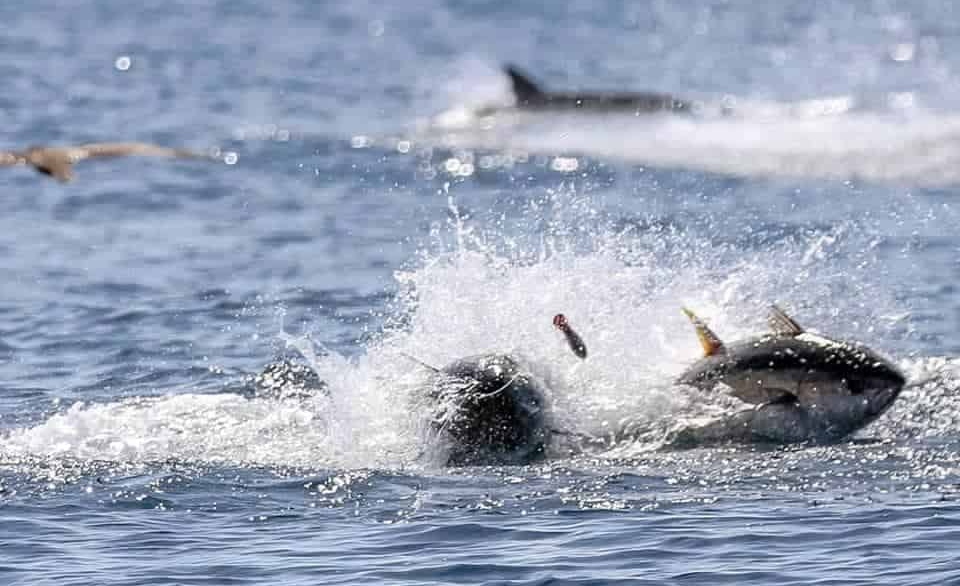Yellowfin Tuna in Central America
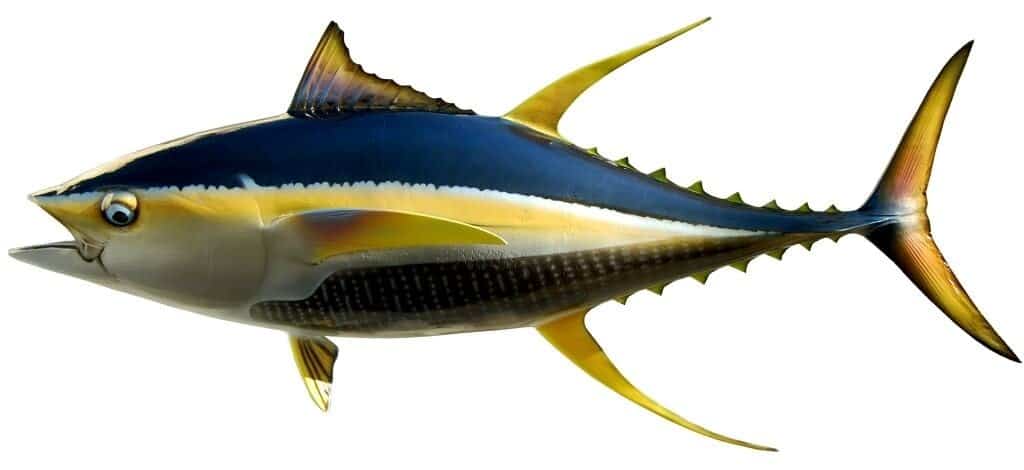
What do Yellowfin Tuna Eat?
Yellowfin tuna are opportunistic feeders and seem to eat whatever is available to them. Yellowfin tuna in Central America are often found with large pods of spinner dolphins as they chase the same bait schools. As they roam all the oceans in the world their diet is varied and includes small dorado, mackerel, flying fish, squid, crustaceans, and even other smaller tuna.
How to Catch Yellowfin Tuna in Central America
Live Bait: When most anglers think about live baiting while saltwater fishing, their minds probably turn to marlin or slow trolling for inshore trophies like roosterfish or cubera snapper. Not all offshore anglers know that the best way to catch the biggest cow tuna is with live bait. You can trick the younger, smaller tuna into smashing a popper or crank bait at the surface, but the 100-200+ lb fish have been around the block a few times and have refined taste that only prefers live bait. The best live bait for yellowfin tuna are bonito, which can survive hours in the tuna tubes and are hardy enough to be bridled with a circle hook and slow trolled around.

